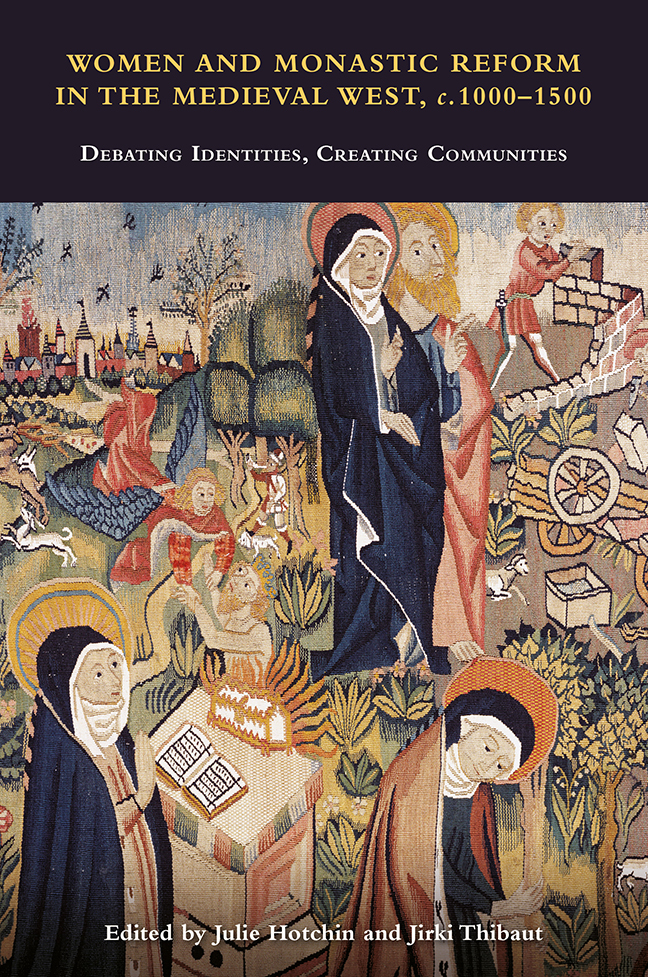 Women and Monastic Reform in the Medieval West, c.1000-1500
Women and Monastic Reform in the Medieval West, c.1000-1500 Published online by Cambridge University Press: 09 January 2024
In her magisterial work on women's monasticism from early Christianity to modernity, Jo Ann McNamara offered this contrast between men's and women's religious life:
Scholars have easily perceived men who have served the Catholic Church in their orderly ranks as monks and secular clergy, distributed according to their specialized vocations. Women religious have been torn between lay and clerical status, between episcopal and monastic jurisdictions, between active and contemplative vocations defined by male authorities. Thus, despite the variety of their activities, women's experience of religious life, as it came to be called, had profoundly different lineaments from men’s.
This assessment of the differences in orderliness between men's and women’s monastic communities is characteristic of continuing assumptions about high and late medieval monasticism. We have tended to associate men's monasticism with well-defined and centralised monastic orders such as the Cistercians, Dominicans and Franciscans. Participation in these orders involved exemption from the jurisdiction of the local bishop and clear connection to the order's governing structure. By contrast, we have seen women's communities as more local, with more tenuous connections to the governing structures that defined these monastic orders.
While important research since McNamara's work has demonstrated that some women's communities were more integrated into large monastic orders than had been previously believed, scholars of women's monasticism are aware that many communities of religious women remained under the local bishop, following the Rule of Saint Benedict or Saint Augustine. A remaining problem in efforts to compare men's and women's monasticism is that we have thought of the continuing existence of individual monastic houses under the jurisdiction of the bishop as a phenomenon that primarily applied to women's houses due to the difficulty of gaining incorporation into male-centred, centralised monastic orders. Nevertheless, many men's communities remained outside of strong, organising networks.
In this chapter, I will look at continuing efforts by church leaders to organise both men's and women's monastic communities, connecting them to existing or new monastic networks in order to define and regulate individual, local monasteries. In earlier research on religious women in late medieval Bologna, I investigated the fluctuations in rule and affiliation that were part of the experience of some women's monastic communities. I found that changes in local monasteries in the fifteenth century represented continuing efforts to organise monastic life in line with programmes that had begun in the high Middle Ages.
To save this book to your Kindle, first ensure [email protected] is added to your Approved Personal Document E-mail List under your Personal Document Settings on the Manage Your Content and Devices page of your Amazon account. Then enter the ‘name’ part of your Kindle email address below. Find out more about saving to your Kindle.
Note you can select to save to either the @free.kindle.com or @kindle.com variations. ‘@free.kindle.com’ emails are free but can only be saved to your device when it is connected to wi-fi. ‘@kindle.com’ emails can be delivered even when you are not connected to wi-fi, but note that service fees apply.
Find out more about the Kindle Personal Document Service.
To save content items to your account, please confirm that you agree to abide by our usage policies. If this is the first time you use this feature, you will be asked to authorise Cambridge Core to connect with your account. Find out more about saving content to Dropbox.
To save content items to your account, please confirm that you agree to abide by our usage policies. If this is the first time you use this feature, you will be asked to authorise Cambridge Core to connect with your account. Find out more about saving content to Google Drive.